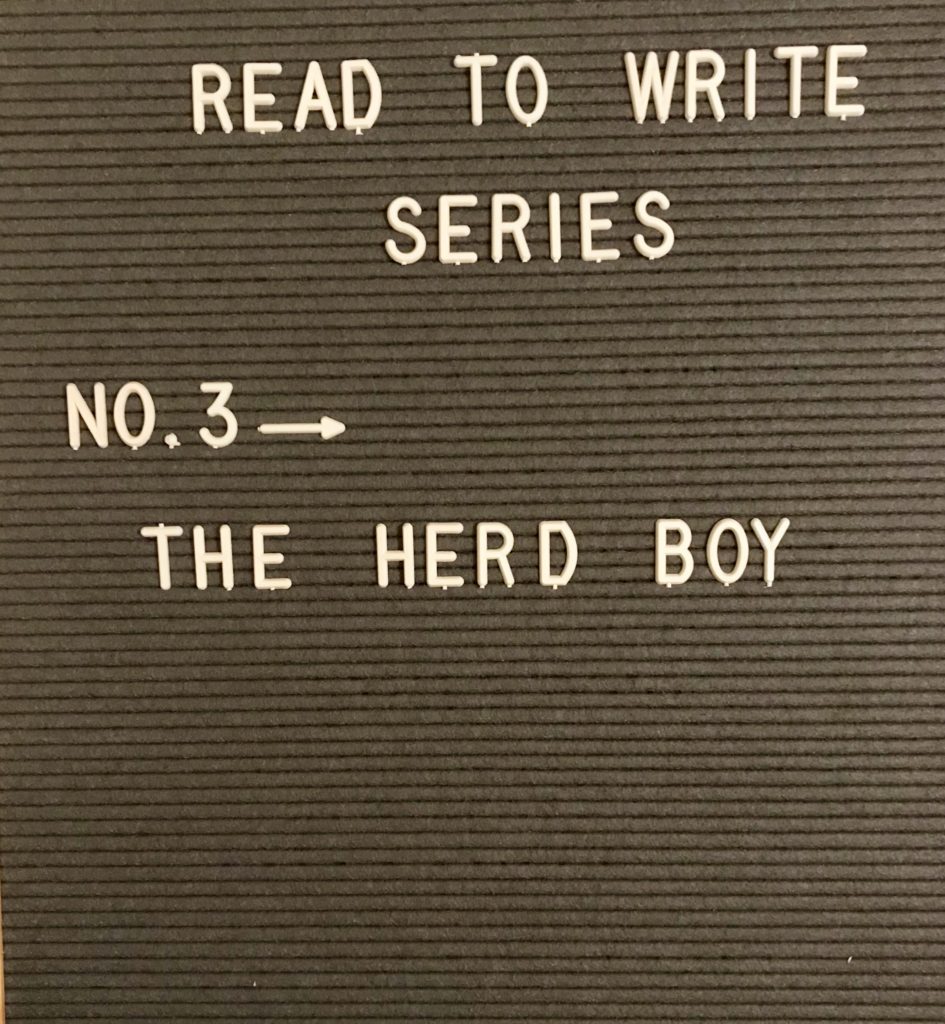The Herd Boy is not the story of Nelson Mandela. Not exactly. The author, Niki Daly, gives her main character a different name, Malusi. But he is a herd boy like Mandela was, and he is living in a village similar to the one Mandela grew up in. And like Mandela, Malusi has dreams of becoming President.
The book may not be the stuff of a footnoted history lesson, but Daly’s question: “What is there in the life of a herd boy that would help prepare him to become the shepherd of a nation?” is a great example of how one creates Creative Nonfiction. She’s wondering how she can make a story out of Mandela’s humble beginnings in order to not just honor Nelson Mandela, but to show children that their childhoods “so often seem custom-made for the adults we become.”
“Outside, the air is cool and the sun is rising – first a red rim along the surrounding hills, then turning to gold as it rises and starts warming the village.” Daly would have to know something about Africa to write this description. She’d have to watch a sun rise in order to know it starts out as a “red rim.” She’d have to know about the hills and what the village Mandala grew up in was like. Maybe this scene didn’t exactly unfold the way Daly writes it, but she needed to describe the setting accurately in order for the reader to enter into this village, and she created a scene from what she knew about Mandela’s environment when he was a boy.
In a scene where Malusi is by himself watching termites, Daly writes that he is proud of the hard-working bugs, marching and working together. “If he sees one on its own, he feels sorry for it and says, ‘Hamba! Go away, little gogga – go and join your people.” We don’t know if Mandela really thought or did this, but the scene gives insight into his character as well as give depth to a herd boy’s day.
Each scene is rich with factual components of what a herd boy’s life is like and yet the happenings in each are metaphors for the sorts of things Mandela would have to do as President. Malusi helps the weaker insects, he shoos off a fierce baboon that attacks one of his sheep, he takes off his red shepherds cloak and swaddles the lamb to carry it home. Here, Daly illustrates exactly what it is in the life of a lowly herd boy that would prepare him to become a world leader.
It’s important to explore Daly’s decision to create a fictional character instead of using Mandela as a character in the story. While I think it would’ve worked had she portrayed Mandela as a young boy, I’m not sure another point she wanted children to understand would’ve been as clear. That is, that no matter what our beginnings are, we have the opportunity to use our surroundings, no matter how humble, to let them form whom we become. By using a fictional character, children might be able to step into that world more easily then if they knew they were reading about a “real” person. Her choice to use a fictional character helps children see what it is true in their environment.
We might not learn cold hard facts about Mandela, but we get an idea of who he was and how his character was formed. What’s more, we have a chance to look around our neighborhoods, towns, and villages, and find our stories and think about the people we are becoming.
Order The Herd Boy here (or your other favorite local bookstore).
Work With Me –
I now offer manuscript and essay critique, and would love to read your work. Interested? Details here.


Leave a Reply